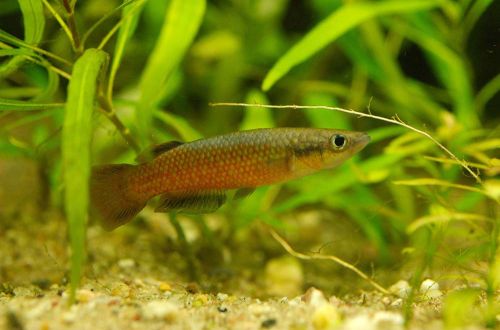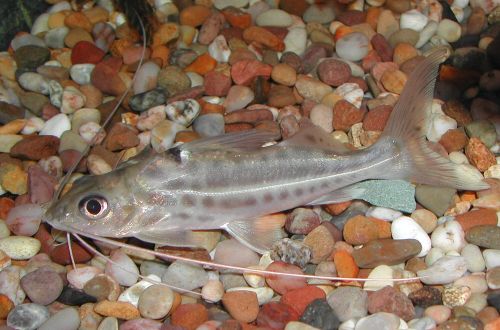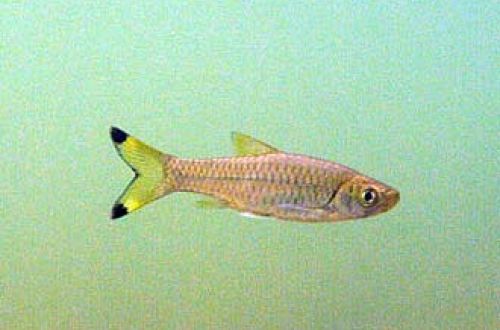
ribbon loach
The ribbon loach, scientific name Nemacheilus binotatus, belongs to the family Nemacheilidae (Goltsovye). The fish is native to Southeast Asia. It is found in the basins of the Maeklong and Chao Phraya rivers in Thailand. Inhabits shallow (up to 1 meter) flowing streams and rivers with rocky and sandy substrates interspersed with organic debris (vegetable remains, etc.).

Description
Adults reach a length of about 6 cm. The fish has a simple pattern consisting of three black lines stretching from head to tail. Two lines run along the sides, the third – along the back. The main color is grey. Fins are translucent.
Sexual dimorphism is weakly expressed. Females may appear larger (fatter) than males, but this only applies to fish of the same age.
Behavior and Compatibility
Leads a reclusive lifestyle, avoids large flocks. A good choice would be small fish that live in nature in similar biotopes, for example, some species of Gastromizons, Siamese algae eater, fish of the genus Garra: Garra Rufa, Rainbow Garra, Rainbow Garra and others.
Territorial species should be avoided, including closely related species such as Common Char and Shistur.
Brief information:
- The volume of the aquarium – from 50 liters.
- Temperature – 23-26°C
- Value pH — 6.0–7.5
- Water hardness – mostly soft (2-12 dGH)
- Substrate type — stony
- Lighting – any
- Brackish water – no
- Water movement – moderate or strong
- The size of the fish is about 6 cm.
- Food – any sinking food
- Temperament – peaceful
- Keeping alone or in a small group
Maintenance and care, arrangement of the aquarium
The recommended tank sizes for one or two Ribbon Loaches start at 50 liters. The content is quite simple if optimal conditions are maintained. In the design, the focus is on the lower tier. The substrate should consist of coarse sand, stones, boulders. The presence of aquatic vegetation is not required. If you wish, you should limit yourself to unpretentious species that can grow on the surfaces of stones and snags. It can be all types of Anubias, various aquatic mosses and ferns.
Flow is welcome. The productive internal filter will provide both the movement of water, and necessary cleaning. Being a native of flowing waters, the fish is sensitive to water quality. You can not rely solely on the filtration system, it is necessary to replace part of the water (30-50% of the volume) with fresh weekly and remove the accumulated organic waste.
Also, the aquarium should be equipped with an aeration system, if it is not provided in the filter.
Food
An omnivorous species, in nature they feed on small insects, worms, crustaceans and other zooplankton with some plant material.
The aquarium will accept most of the popular sinking foods in dry, frozen and live form.





